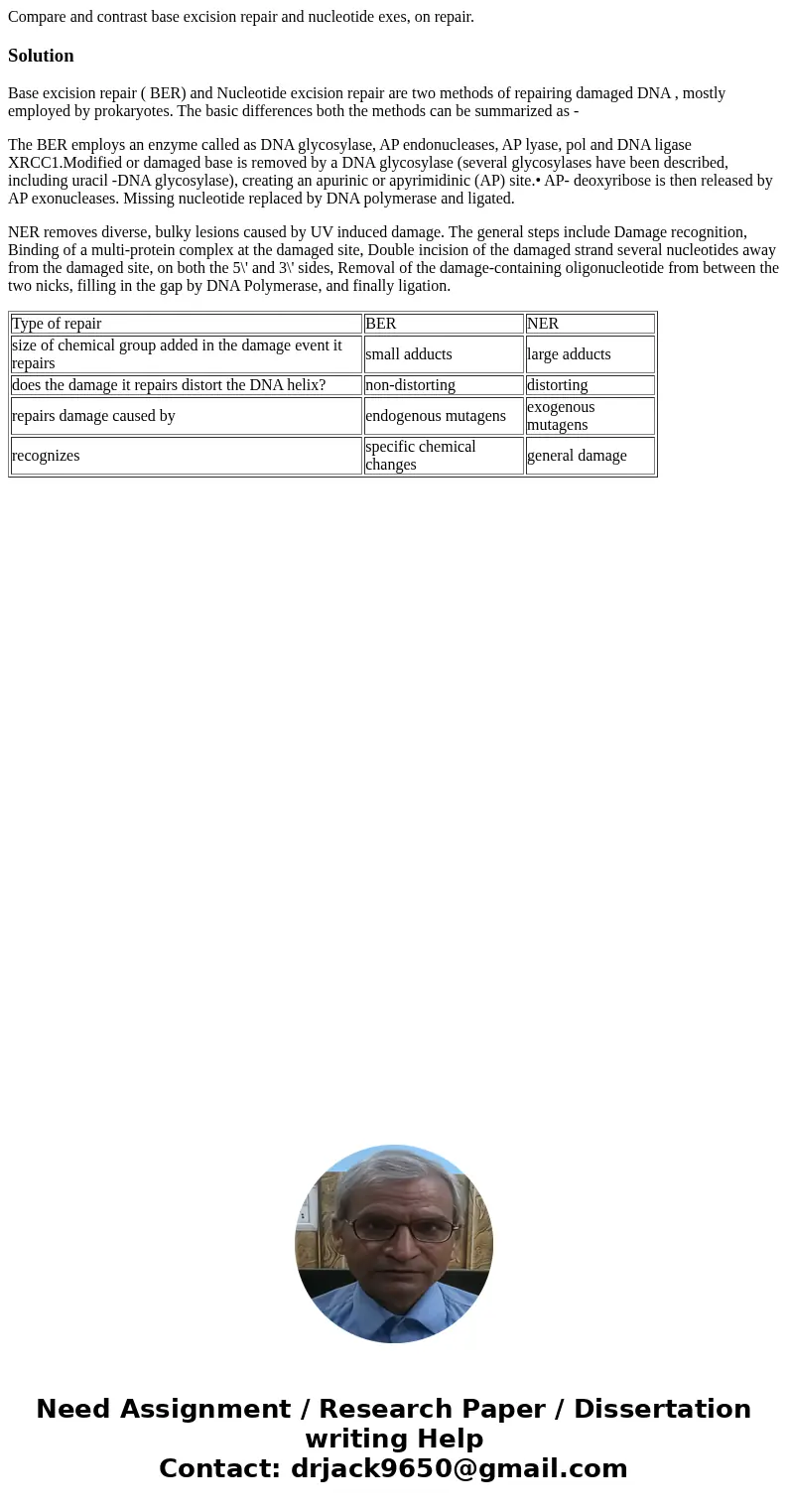Compare and contrast base excision repair and nucleotide exe
Solution
Base excision repair ( BER) and Nucleotide excision repair are two methods of repairing damaged DNA , mostly employed by prokaryotes. The basic differences both the methods can be summarized as -
The BER employs an enzyme called as DNA glycosylase, AP endonucleases, AP lyase, pol and DNA ligase XRCC1.Modified or damaged base is removed by a DNA glycosylase (several glycosylases have been described, including uracil -DNA glycosylase), creating an apurinic or apyrimidinic (AP) site.• AP- deoxyribose is then released by AP exonucleases. Missing nucleotide replaced by DNA polymerase and ligated.
NER removes diverse, bulky lesions caused by UV induced damage. The general steps include Damage recognition, Binding of a multi-protein complex at the damaged site, Double incision of the damaged strand several nucleotides away from the damaged site, on both the 5\' and 3\' sides, Removal of the damage-containing oligonucleotide from between the two nicks, filling in the gap by DNA Polymerase, and finally ligation.
| Type of repair | BER | NER |
| size of chemical group added in the damage event it repairs | small adducts | large adducts |
| does the damage it repairs distort the DNA helix? | non-distorting | distorting |
| repairs damage caused by | endogenous mutagens | exogenous mutagens |
| recognizes | specific chemical changes | general damage |

 Homework Sourse
Homework Sourse